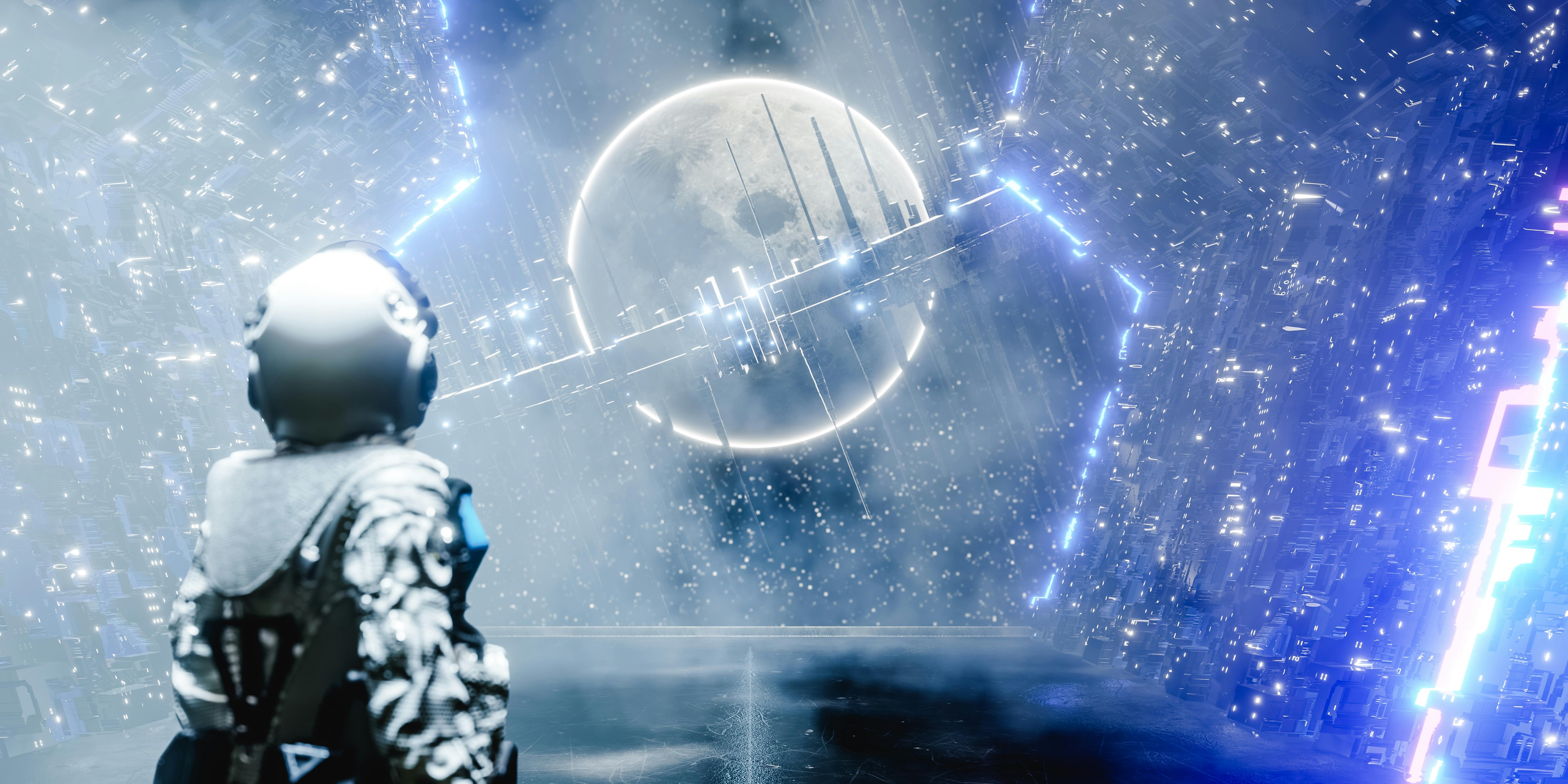Imagination as the Blueprint of Innovation
Imagination has always been the silent architect of human progress. Academic research in creativity and innovation studies has shown that speculative storytelling often serves as a catalyst for invention. Mihaly Csikszentmihalyi’s work on creativity highlights how “domain-shifting ideas” — thoughts that appear impractical at first — often spark real breakthroughs once applied in a scientific or technological context. Science fiction sits exactly at this intersection. By pushing the boundaries of what seems possible, it inspires engineers, researchers, and entrepreneurs to close the gap between fiction and reality. Whether it’s flying cars, voice-activated machines, or interstellar travel, what began as literary imagination often becomes a north star for innovation.
Humanity’s Fascination with Space
Our relationship with space has always been one of wonder and ambition. From Galileo pointing his telescope at Jupiter’s moons to the Apollo 11 astronauts walking on the lunar surface, humanity has continuously sought to stretch its reach beyond Earth. Today, space is not merely a distant frontier — it is a potential marketplace, a laboratory, and a second home. Governments and private enterprises alike invest billions into understanding the cosmos, not just for exploration but for resources, planetary defense, and the future survival of humankind. This pursuit echoes humanity’s inherent drive: to venture into the unknown, guided by both curiosity and necessity.
Science Fiction and Space: From Pages to Launchpads
Science fiction has often predated reality in space exploration. Jules Verne’s From the Earth to the Moon (1865) described astronauts launched in a cannon-propelled capsule, anticipating the Apollo missions in surprising detail, including launch location (Florida) and splashdown recovery in the ocean. Similarly, Arthur C. Clarke’s 1945 essay proposed geostationary satellites decades before they became integral to modern communication. Stanley Kubrick’s 2001: A Space Odyssey showcased rotating space stations, tablet-like devices, and AI-powered spacecraft—ideas that inspired engineers at NASA and beyond.
Even entertainment franchises like Star Trek left their mark: the “communicator” inspired the flip phone, while its vision of multicultural crews exploring space fueled support for inclusivity in real-world astronaut programs. Science fiction, in essence, has been more than entertainment—it has been a roadmap.
Sci-Fi’s Power to Inspire Generations
Beyond inventions, science fiction has shaped mindsets. Carl Sagan once noted that many scientists were motivated by the stories they read in their youth. Mae Jemison, the first African-American woman in space, has openly credited Star Trek and the character of Lieutenant Uhura as formative inspirations. In the Cold War era, public enthusiasm for the U.S. space program was amplified by fictional works that dramatized space as the ultimate frontier of human progress. Films like Star Wars galvanized younger generations, making the idea of space exploration not just a government mission but a cultural aspiration.
Perhaps one of the most iconic examples was Ronald Reagan’s invocation of the phrase “Star Wars” to describe the Strategic Defense Initiative — proof that science fiction didn’t just inspire engineers and astronauts but even influenced geopolitical policy. These cultural moments illustrate how stories reshape ambition and mobilize collective willpower toward exploration.
What’s Next? Sci-Fi Concepts on the Horizon
As the boundary between science fiction and science narrows, several once-imaginary concepts edge closer to reality:
- Flying Cars and RoboTaxis: Companies like AeroMobil, Terrafugia, and Hyundai’s Supernal are piloting prototypes that echo Asimov’s visions of aerial mobility. RoboTaxis powered by AI are already operational in cities like San Francisco and Shanghai.
- Autonomous Robots: Inspired by classics like I, Robot, we now see humanoid assistants from companies such as Boston Dynamics and Tesla, with potential roles ranging from caregiving to planetary exploration.
- Space Habitats and Colonization: Visions of Martian colonies, long the domain of Ray Bradbury’s The Martian Chronicles, are being pursued by SpaceX and NASA. The idea of multi-planetary life, once speculative, now sits on mission roadmaps.
- Time Travel and Quantum Exploration: While literal time travel remains theoretical, advancements in quantum mechanics and simulation technologies hint at possibilities of bending perceptions of time, if not the fabric of time itself.
These concepts are not merely whimsical; they are grounded in ongoing research, investment, and prototypes, demonstrating how science fiction continues to accelerate the pace of innovation.
Conclusion: The Bright Horizon of Exploration
The trajectory of science fiction’s influence makes one thing clear: humanity thrives when it dreams boldly and dares to make those dreams real. The future of space exploration looks bright, not only because of the technological strides we are making but also because of the collective imagination that fuels them. Unless we continue to explore the unknown, we risk stagnation. Just as humanity built awe-inspiring technologies on Earth, we are called to extend that creativity into the cosmos — guided by signs of potential life, growth, and the possibility of civilizations beyond our own.
Allocating resources and funding toward space exploration is not indulgence; it is investment in survival, discovery, and progress. As visionary stories remind us, exploring space is not just about looking outward—it is about expanding what it means to be human. The legacy of science fiction is a future where imagination shapes reality, and that future is closer than we think.


